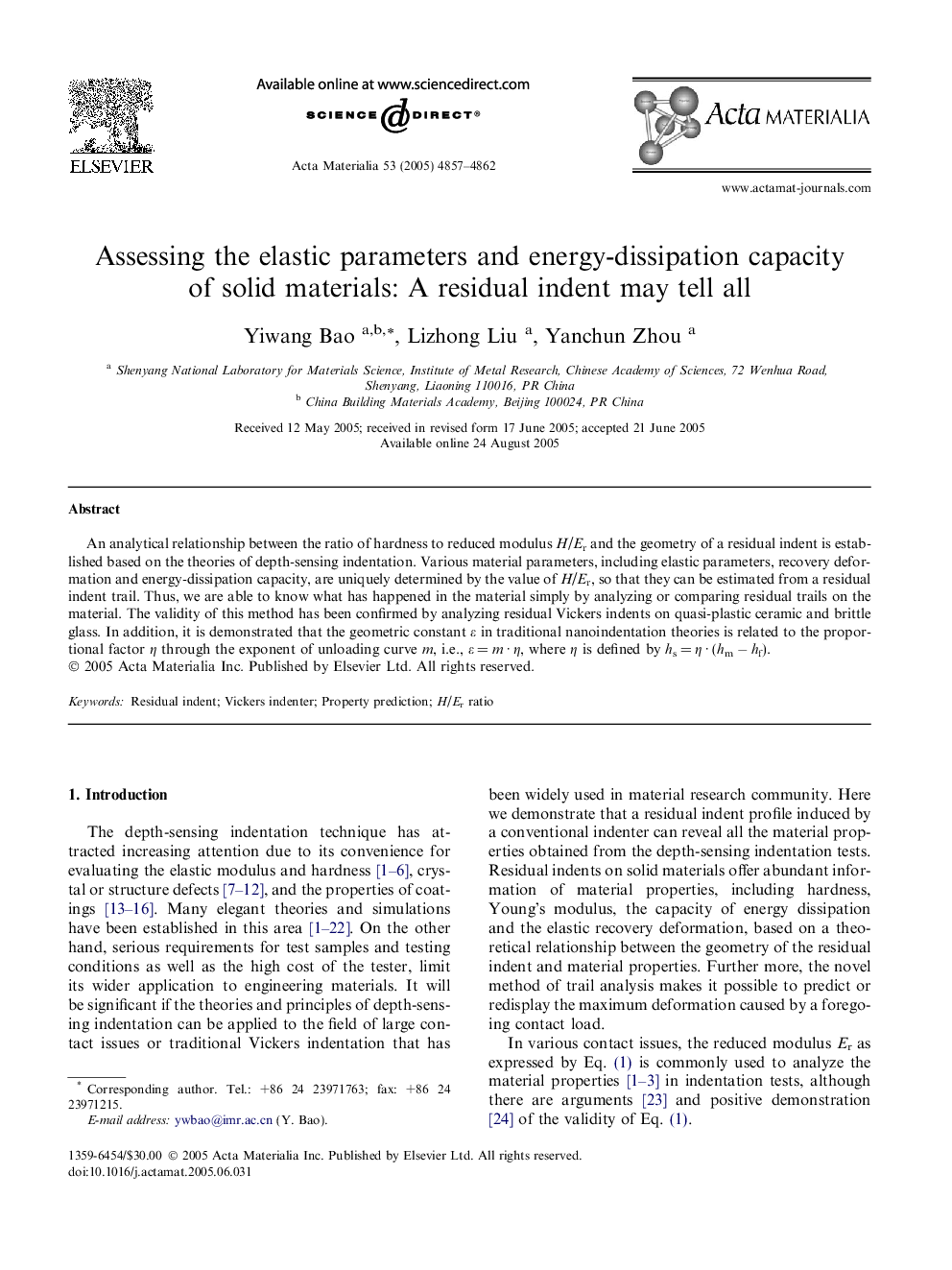| Article ID | Journal | Published Year | Pages | File Type |
|---|---|---|---|---|
| 1451138 | Acta Materialia | 2005 | 6 Pages |
An analytical relationship between the ratio of hardness to reduced modulus H/Er and the geometry of a residual indent is established based on the theories of depth-sensing indentation. Various material parameters, including elastic parameters, recovery deformation and energy-dissipation capacity, are uniquely determined by the value of H/Er, so that they can be estimated from a residual indent trail. Thus, we are able to know what has happened in the material simply by analyzing or comparing residual trails on the material. The validity of this method has been confirmed by analyzing residual Vickers indents on quasi-plastic ceramic and brittle glass. In addition, it is demonstrated that the geometric constant ε in traditional nanoindentation theories is related to the proportional factor η through the exponent of unloading curve m, i.e., ε = m · η, where η is defined by hs = η · (hm − hf).
